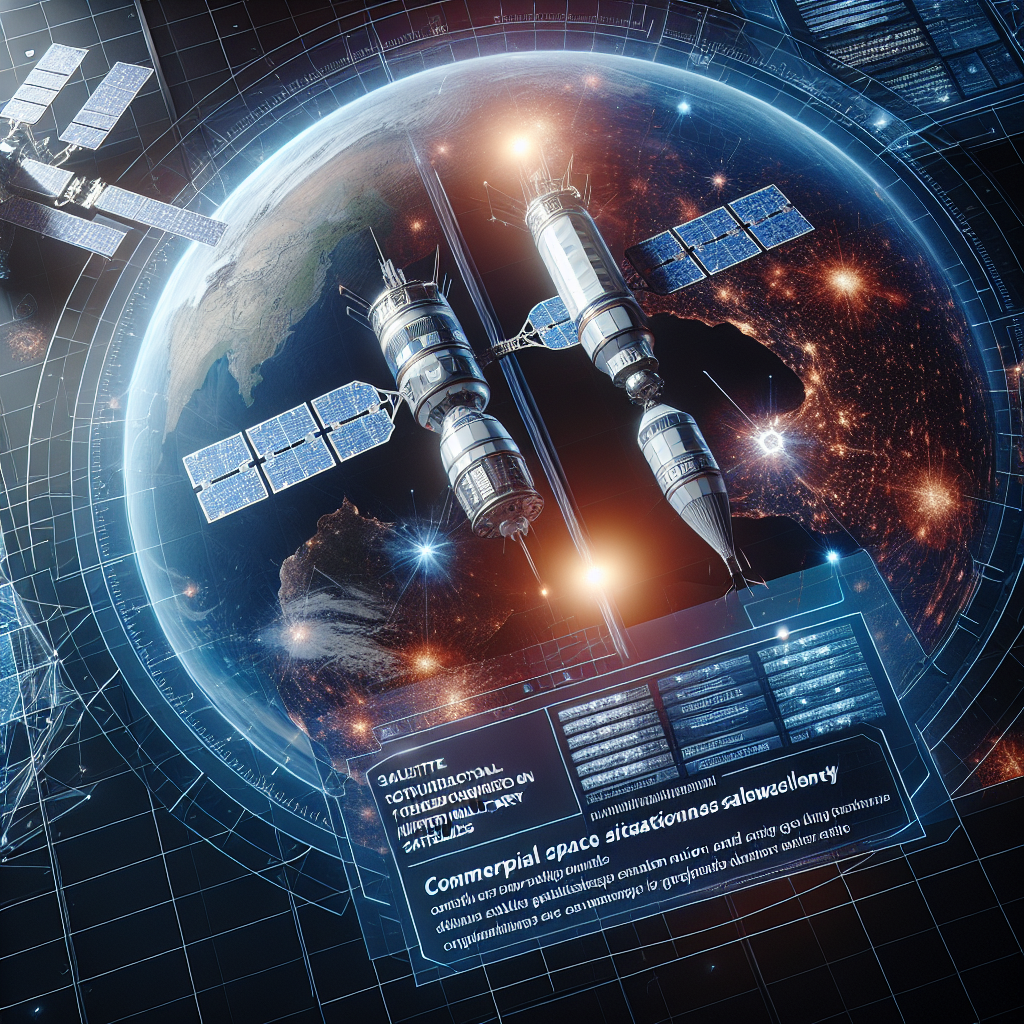In a new wave of space competition, as the Chinese Communist Party (CCP) rapidly advances, the United States is also taking countermeasures. A recent disclosure by a US commercial space situational awareness company revealed that a satellite from the United States Space Force “inspected” two military satellites belonging to the CCP at close range.
The company that disclosed this information is COMSPOC, a commercial provider of space situational awareness software. The company stated that on April 26 and 29, the US Space Force satellite USA 324 flew close to the Chinese TJS-16 and TJS-17 satellites at distances of 10.5 miles and 7.4 miles, respectively. It is currently unclear why the US Space Force satellite bypassed the targets.
USA 324 is a satellite from the US Space Force’s Geosynchronous Space Situational Awareness Program (GSSAP), launched in January 2022. It is capable of tracking and observing other satellites in geosynchronous orbit 36,000 kilometers above the Earth.
The two Chinese satellites that were inspected were the communication technology test satellites TJS-16 and TJS-17, launched on March 29 and April 10, respectively. While the CCP claims these satellites are for satellite communication, data transmission, and technical research purposes, Western nations generally believe they are mostly early-warning satellites for ballistic missiles.
As part of the space race, the United States, Russia, and China are all developing capabilities for close proximity operations in space, including satellite rendezvous and close inspections, close proximity satellite operations, and in-space satellite refueling, among others. These capabilities are essential for future space warfare.
The US military’s GSSAP program, operational since 2015, currently has eight satellites in operation, with two satellites working in tandem, each weighing between 650 and 700 kilograms and powered by solar energy. GSSAP satellites in geosynchronous orbit can surveil and observe targets and are likely to engage in some form of operation.
Data released by the Russian space surveillance agency shows that the GSSAP constellation is highly active, having conducted hundreds of maneuvers since 2015, approaching or engaging with over a dozen satellites. These satellites include not only US satellites but also those of other countries, including China’s communication technology test satellites and Russia’s Kosmos-2520, Kosmos-2521, and Kosmos-2522, among others.
On March 18 this year, a senior US Space Force official stated that commercial systems detected Chinese satellites practicing “dancing” maneuvers in low Earth orbit in 2024. This action involved three “Shiyan-24C” experimental satellites and two signal intelligence “Shijian-605” A and B satellites. The exercise demonstrated the satellites’ capability to perform complex maneuvers in orbit, involving rendezvous, close operations, and inspections of other satellites.
China has previously conducted several similar rendezvous and close proximity operation tests. The Shiyan-17 satellite launched on November 3, 2016, was officially described by the CCP as a new technology verification satellite. However, US aerospace image analysis company AGI discovered that after entering geosynchronous orbit, the Shiyan-17 satellite engaged in a spiraling motion along the orbit. It approached China’s decommissioned Zhongxing-5A communication satellite, began closely observing it, and then the Shiyan-17 and Zhongxing-5A began circling each other. Eventually, Zhongxing-5A drifted from its original orbit, while Shiyan-17 took its place.
Russia has also conducted satellite close proximity “dancing” experiments multiple times. The Kosmos-2542 satellite launched on November 25, 2019, began a series of maneuvers from January 20, 2020, changing positions and timing multiple times to match the “orbital period” of the US reconnaissance satellite USA 245, maintaining a distance of approximately 150 to 300 kilometers. USA 245 is believed to be one of the US military’s advanced KH-11 Keyhole series reconnaissance satellites, deployed in a sun-synchronous orbit with an astonishing resolution of 0.1 meters.
Furthermore, both the United States and China are developing technology for in-space satellite refueling to extend the lifespan of satellites. Northrop Grumman developed the world’s first high-orbit life-extension satellite, MEV-1, successfully refueling a commercial satellite in February 2020 to extend its lifespan by around five years. Additionally, the US is researching space repair satellites that can approach satellites, replace damaged components including solar panels, effectively bringing malfunctioning satellites back to life.

